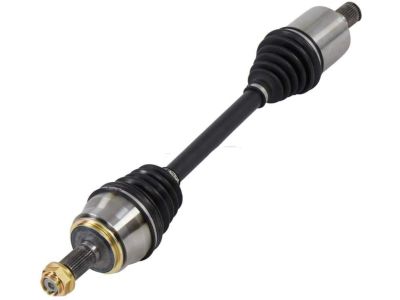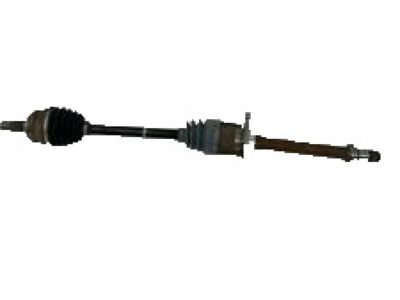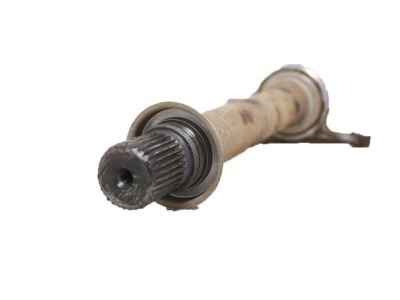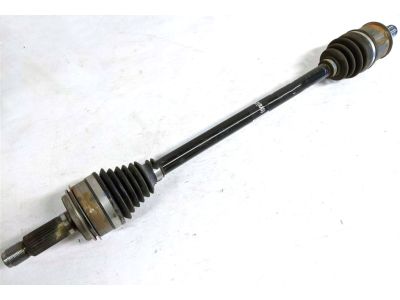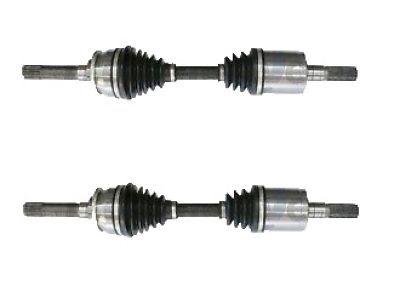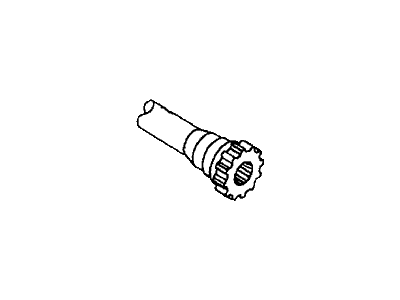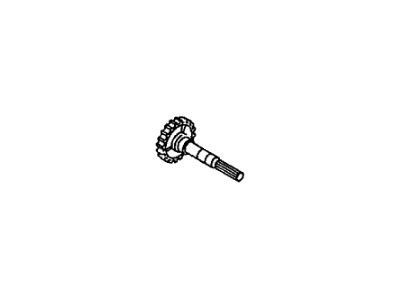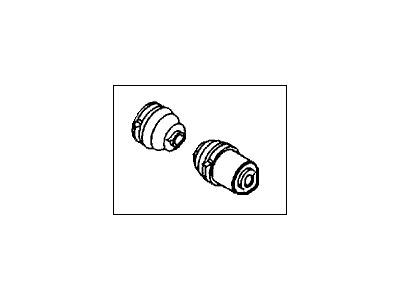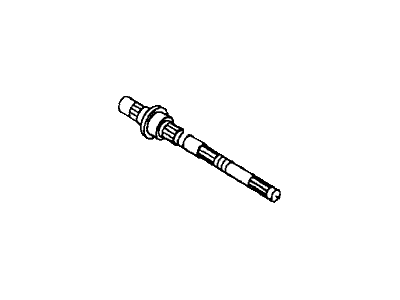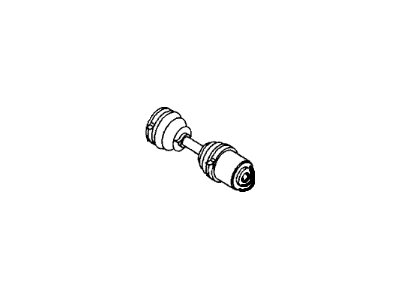×
- Live Chat
- 1-888-984-2011

My Garage
My Account
Cart
Genuine Honda Passport Axle Shaft
Car Axle Shaft- Select Vehicle by Model
- Select Vehicle by VIN
Select Vehicle by Model
orMake
Model
Year
Select Vehicle by VIN
For the most accurate results, select vehicle by your VIN (Vehicle Identification Number).
25 Axle Shafts found
Honda Passport Driveshaft Assembly, Driver Side
Part Number: 44306-TZ5-A31$270.95 MSRP: $385.97You Save: $115.02 (30%)Honda Passport Driveshaft Assembly, Passenger Side
Part Number: 44305-TZ5-A31$279.49 MSRP: $398.13You Save: $118.64 (30%)Honda Passport Shaft Assembly, Half
Part Number: 44500-TZ3-A01$156.36 MSRP: $222.73You Save: $66.37 (30%)Honda Passport Driveshaft Assembly, Passenger Side
Part Number: 42310-TG7-A02$243.55 MSRP: $346.93You Save: $103.38 (30%)Honda Passport Driveshaft Assembly, Driver Side
Part Number: 42311-TG7-A02$243.55 MSRP: $346.93You Save: $103.38 (30%)Honda Passport Shaft Assembly Front Drive
Part Number: 8-97365-158-0$66.98 MSRP: $548.70You Save: $481.72 (88%)Honda Passport Shaft, Rear Axle
Part Number: 8-97081-942-0$348.99 MSRP: $497.13You Save: $148.14 (30%)Honda Passport Shaft Axle, Front Inner
Part Number: 8-97188-174-1$328.46 MSRP: $672.75You Save: $344.29 (52%)Honda Passport Shaft, Rear Output Wheel Drive
Part Number: 8-97018-363-1$432.36 MSRP: $623.90You Save: $191.54 (31%)Honda Passport Shaft, Output (47T)
Part Number: 8-97113-405-0$432.36 MSRP: $623.90You Save: $191.54 (31%)Honda Passport Shaft Assembly, Right Front Drive
Part Number: 8-94173-304-3$813.13 MSRP: $1173.35You Save: $360.22 (31%)Honda Passport Shaft Assembly, Right Front Drive
Part Number: 8-97120-778-0$813.13 MSRP: $1173.35You Save: $360.22 (31%)Honda Passport Shaft Assembly, Front Drive
Part Number: 8-97139-095-0$813.13 MSRP: $1173.35You Save: $360.22 (31%)Honda Passport Shaft, Rear Axle
Part Number: 8-97134-265-0$309.41 MSRP: $440.75You Save: $131.34 (30%)Honda Passport Shaft, Main Transmission (Teeth=28-34-26-27)
Part Number: 8-97120-040-0$318.64 MSRP: $453.90You Save: $135.26 (30%)
| Page 1 of 2 |Next >
1-20 of 25 Results
Honda Passport Axle Shaft
Created to contribute towards the movement and steering capacity of drive wheels, the Axle Shaft in Honda Passport vessels is crucial in the transmission of power from the differential. Usually made from high-strength steel, these axle shafts have to spin independently to enhance the space's capability to matters which concern cornering. Honda manufactures its Passport car models with both solid axles and halfshafts depending on the suspension of the model. Basically, solid axles are fitted to certain models that are now a little bit dated, while halfshafts are utilized in models with a frame of independent suspension which makes travelling a little bit more comfortable. The main distinction lies in their configuration: solid axles bear loads as well as transmit torque while halfshafts link between the differential and the wheels, to allow dissimilar speeds. Thus, the Axle Shaft helps create the foundation of the Honda Passport's power transmission and ride stability. Lubrication and other routine services should not to be overlooked because they protect against deterioration that could produce noise, vibration, and possible failure.
In search of affordable OEM Honda Passport Axle Shaft? Consider browsing through our extensive inventory of genuine Honda Passport Axle Shaft. Not only do we provide market-leading prices and a manufacturer's warranty, but we also pride ourselves on exceptional customer service and swift delivery.
Honda Passport Axle Shaft Parts Questions & Experts Answers
- Q: What are the key features of Axle Shaft,Differential and Drive Shaft on Honda Passport?A: Several driveshaft assemblies are used in the vehicles and all Rodeo has a driveshaft come with a center bearing while the Amigo comes with a single piece driveshaft with no center bearing. The driveshafts for 2WD manual transmissions have a slip yoke at the extreme end of the extension housing, and are attached to the pinion flange at the differential end, and has two Universal Joints-one at the slip yoke and the other at the rear end of the shaft where it connects to the pinion flange. On the other hand, those for automatics and 4WD fix to flanges in the extension housing and the differential; the slip yoke is behind the center bearing in the rear section. Two-piece driveshafts with a center bearing feature three U-joints: At housing of companion flange is one, behind the center bearing is one, and at the pinion flange of the differential is one. Also included is front driveshaft that links to a flange on the front of the transfer case as well as a pinion flange at the front axle differential; both ends of the former come with two U-joints. Every U-joint is serviceable separately from the shaft; the driveshaft has to be reassembled and put back in its original order, otherwise, the excessive vibration is hardly avoidable. The rear axle is described as semi-floating, and here the axleshafts sit across the vehicle, with the housing being taken up by the suspension arrangement. The differential in the centre of the rear axle transmits the turning force coming from the driveshaft to the axle halves, which are splined to mesh with the differential gears; the outer support is available from the rear wheel bearings that are pressed onto the axle shafts. Front axle structure of the 4WD vehicle is a differential assembly mounted on the frame and two driveaxles, having constant velocity joints at its two ends for transmitting power from the transmission to wheels at different suspension angles. Because of the sensitive nature and complexity of differential, together with the need for special tools, it is best that any disintegration of the differential to be in the hands of a dealer or a professional repairshop.
